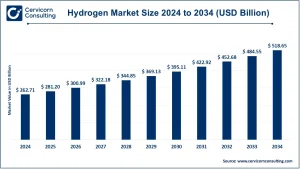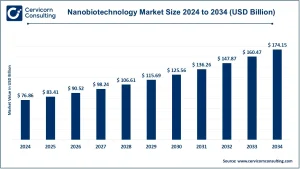Market Overview
The Asia-Pacific perovskite solar cell market is in its early commercialization phase but is advancing rapidly. Valued at USD 187.99 million in 2024, it is anticipated to reach approximately USD 4,728.55 million by 2034, underscoring accelerating adoption of perovskite technology. This surge is driven by its superior conversion efficiency, flexible form factors, and cost-effective manufacturing compared with conventional silicon-based solar cells.
While estimates of the compound annual growth rate (CAGR) vary between 10.84% and 38.05%, all projections confirm robust regional expansion through 2034.
Get a Free Sample: https://www.cervicornconsulting.com/sample/2527
Key Market Trends
1. Emergence of Perovskite–Silicon Tandem Cells
A defining innovation involves integrating perovskite layers with silicon to form high-efficiency tandem modules. Manufacturers across China, Japan, and South Korea are setting up pilot production lines to commercialize this hybrid architecture, which delivers greater energy output than standard silicon cells.
2. Accelerating R&D and Pilot Production
Governments and private enterprises in Asia-Pacific are investing heavily in perovskite R&D to address challenges in durability, toxicity, and scalability. China, Japan, and South Korea lead these efforts, pushing the technology toward faster industrial readiness and commercialization.
3. Expansion in BIPV and Flexible Use Cases
Perovskite’s lightness and flexibility enable adoption in building-integrated photovoltaics (BIPV), wearables, and portable electronics. Its ability to coat curved or irregular surfaces supports innovative solar applications in urban architecture and smart infrastructure.
4. Advancements in Low-Cost Manufacturing
Emerging production techniques such as solution processing and roll-to-roll coating are lowering material and fabrication costs. This is making perovskite cells increasingly viable for mass-market adoption, especially in cost-sensitive economies like India and Southeast Asia.
5. Regulatory Emphasis on Eco-Friendly Solutions
Regulators and manufacturers are prioritizing lead-free materials, advanced encapsulation, and recycling solutions to meet environmental standards. This focus is paving the way for sustainable industry growth and public trust in perovskite technology.
Market Drivers
- Rising Solar Capacity Targets: National renewable energy goals, such as India’s 280 GW solar capacity target by 2030, are amplifying demand for efficient and affordable photovoltaic (PV) solutions.
- Technological Breakthroughs: Laboratory efficiency levels surpassing 25% are validating the commercial viability of perovskite cells.
- Government Incentives: Subsidies, grants, and supportive policies in China, Japan, South Korea, and India are fostering regional innovation and domestic manufacturing.
- Declining Production Costs: Scalable, low-temperature manufacturing processes are reducing capital intensity and attracting new entrants.
- Sustainability Commitments: Corporate and national net-zero initiatives are accelerating investment in next-generation, eco-friendly solar materials.
Impact of Trends and Drivers
- Module Manufacturers: Firms pioneering tandem perovskite–silicon modules are securing early market leadership.
- Material Suppliers: The growing need for advanced encapsulants and barrier films benefits regional suppliers adapting to perovskite-specific demands.
- End-Use Applications: BIPV, automotive, and consumer electronics sectors are emerging as new growth frontiers.
- Regional Dynamics: China leads in manufacturing scale-up, Japan and South Korea emphasize performance optimization, while India is emerging as a cost-driven deployment hub.
Challenges & Opportunities
Challenges:
- Shorter stability lifespans than silicon cells.
- Environmental concerns over lead-based compositions.
- Technical barriers to mass production and standardization.
Opportunities:
- First-mover advantage in tandem module commercialization.
- Broadened application scope in architecture, transport, and consumer electronics.
- Localized supply chain development offering strategic regional competitiveness.
Future Outlook
Between 2024 and 2034, the Asia-Pacific perovskite solar cell market is projected to grow from USD 187.99 million to USD 4,728.55 million, marking a transformative decade for solar innovation in the region.
Success will depend on achieving industrial-scale tandem production, sustainable material compliance, and ongoing R&D momentum. With participation from leading players such as Trina Solar, Jinko Solar, Panasonic, and Toshiba, the region is set to become a global hub for next-generation solar cell advancement.
For a comprehensive market forecast and detailed insights, visit Cervicorn Consulting.


